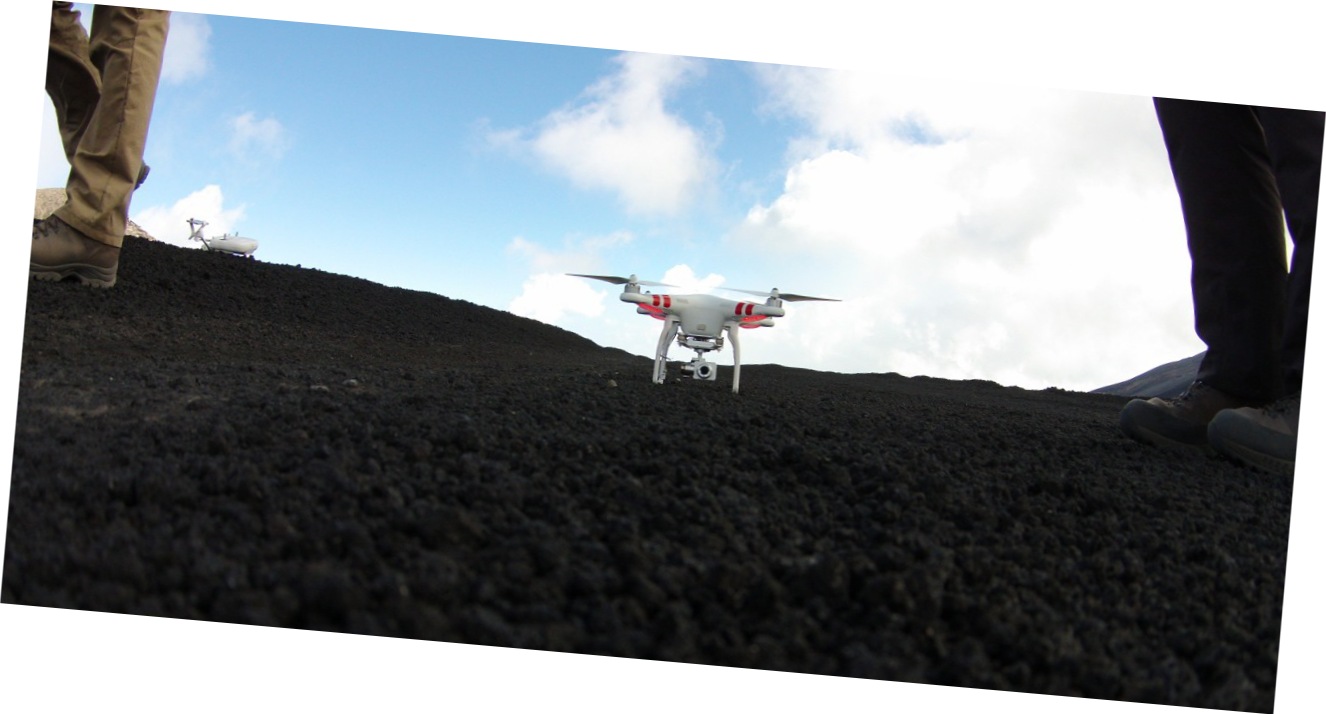In June 2015, our VAMOS volcanoes team (Jonathan Castro, Nicole Bobrowski, Ludwig Simon, and Yves Feisel) traveled to Mount Etna, Sicily—Europe’s most active volcano—to attempt making drone-based volcanic gas measurements. Gas measurements are routinely made to detect changes in volcanic emissions and can sometimes foreshadow eruptions. We were equipped with three DJI drones: two Phantom 2 Vision+’s and one S1000+. The two phantoms were used primarily for photodocumentation and proof-of-concept flying (e.g., high wind and high altitude flights) while the S1000+ was the machine for flying into gas plumes and making measurements with the use of electrochemical sensors and a mini-DOAS spectrometer.
 One of the special things about unmanned aerial devices (UAVs) is that they can go places where humans normally cannot without excessive equipment and uncessary risk. Volcanoes are perhaps the best places to test their capabilities because many volcanoes are subject to “mountain weather”, unpredictable and harsh conditions that arise from the high altitude and exposure of the volcanic edifice. Mount Etna provided a wide range of weather conditions, from very cloudy and windy, to clear skies and light winds.
One of the special things about unmanned aerial devices (UAVs) is that they can go places where humans normally cannot without excessive equipment and uncessary risk. Volcanoes are perhaps the best places to test their capabilities because many volcanoes are subject to “mountain weather”, unpredictable and harsh conditions that arise from the high altitude and exposure of the volcanic edifice. Mount Etna provided a wide range of weather conditions, from very cloudy and windy, to clear skies and light winds.
We were stationed at the Pizzi Deneri volcano observatory (INGV), on the north flank of Mount Etna. Our first flights were made under high wind conditions on a flat plain near the observatory. This day was very successful in terms of testing the drones’ high wind capabilities.
We spent the next three days on the volcano’s summit, which proved more difficult in terms of unsteady strong winds, abundant volcanic gas, and poor visibility.

This short clip shows a phantom struggling to maintain its position in a volcanic cloud; the drone eventually crashed not far away from the crater.

The last day of our trip was highly successful in that we were able to routinely fly the Phantoms into and around craters, however, the the DJI S1000+ had problems with hardward and firmware settings that prevented sufficiently long flights into the plume. The worst incident was the failure of a battery due to the excessive heating that accompanies high power flying. In this instance the DJI S1000+ plummeted from about 25 m to the ground. Luckily the only damage to the craft was a broken landing gear.
The following narrated video clip summarizes some of the sights that we captured using the Phantoms. Note especially the end of the clip showing the Phantom’s entrance into the volcanic crater.
